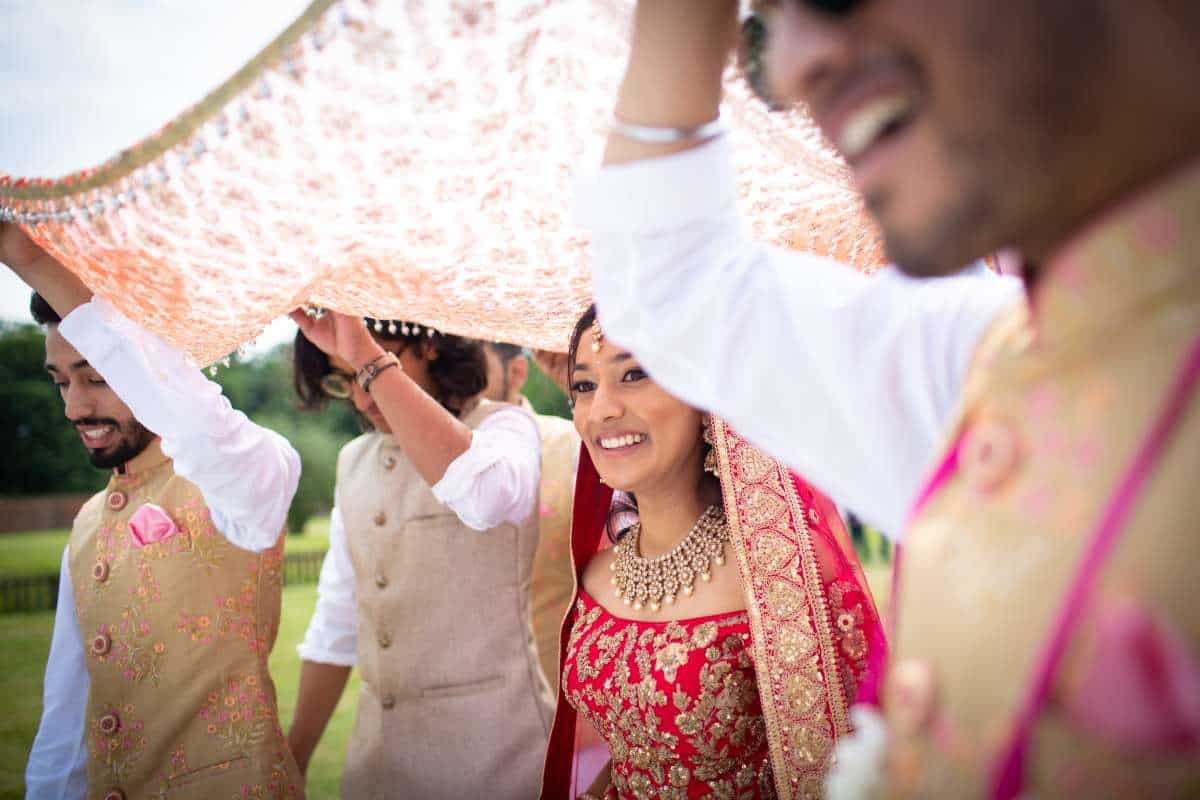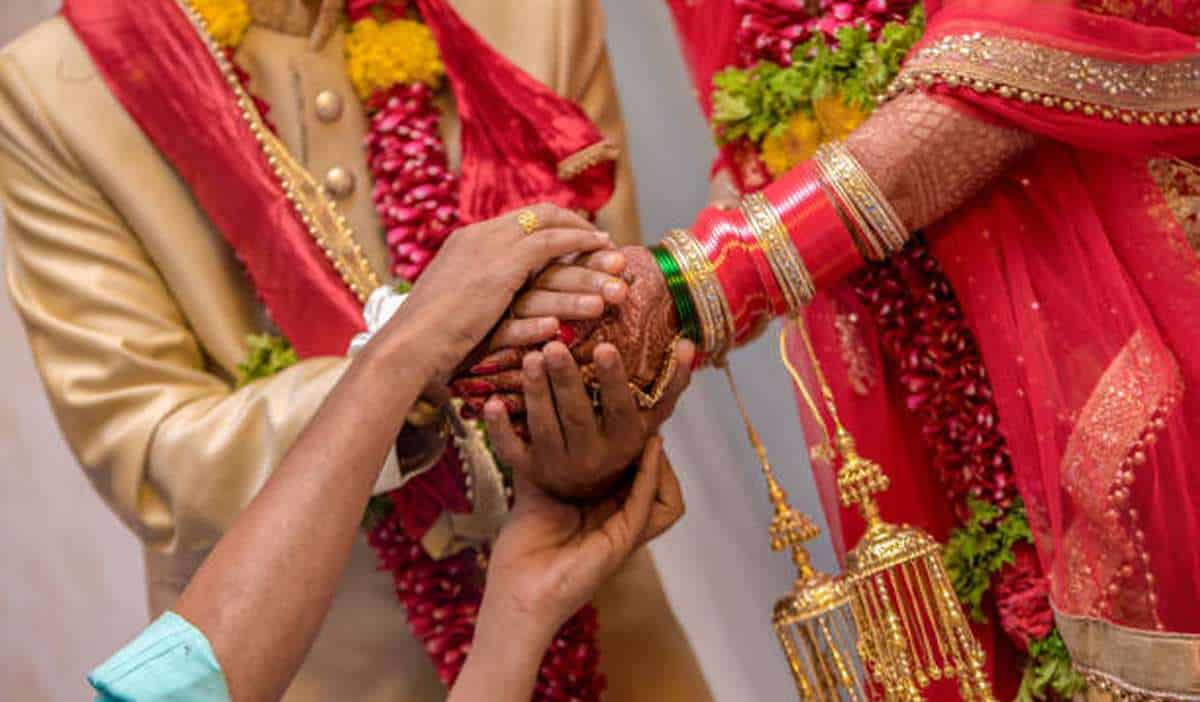Indian weddings are more than just the union of two individuals; they are grand celebrations filled with culture, tradition, and joy.
They can last several days and involve a series of rituals that vary depending on religion, family customs, and regional traditions.
Even in Australia, Indian weddings retain their authenticity while blending local influences.
Here’s a detailed guide on what happens at an Indian wedding, using a structured approach to cover each day of celebration.
Let’s get straight to the point
Indian weddings are grand, multi-day celebrations rich in culture and tradition, often lasting several days with various rituals, adapted to different settings like Australia while maintaining their authenticity.
Indian weddings in Australia blend tradition with local influences, creating vibrant and memorable celebrations.
Day 1: Ganesh Pooja – A Ceremony for Good Luck
The first day of an Indian wedding usually begins with the Ganesh Pooja, a prayer ceremony dedicated to Lord Ganesha, the removal of obstacles.
This is a deeply spiritual part of the wedding and takes place in an intimate setting with close family members and friends.
What is Ganesh Pooja?
- A prayer to invoke the blessings of Lord Ganesha.
- It is a way to start the wedding on an auspicious note.
- Typically, it involves a priest leading the ceremony with chants and offerings.
Australian Context for Ganesh Pooja
In Australia, the Ganesh Pooja is often conducted in homes or private venues, with a simple setup that blends tradition with modernity. Guests might not be required to attend this event, as it is considered a family ritual.
Day 2: Mehndi Ceremony – A Celebration of Art and Beauty
The Mehndi ceremony takes place on the second day, where the bride, along with female friends and relatives, has intricate henna designs applied to her hands and feet. This day marks the beginning of the social celebrations leading up to the wedding.
Significance of Mehndi
- Henna is applied to symbolise beauty, love, and good fortune.
- It is believed that the darker the henna, the stronger the bond between the bride and groom.
- Female guests often participate in this event, receiving simpler henna designs.
The Mehndi Celebration in Australia
The Mehndi event in Australia often includes vibrant decor, music, and a festive atmosphere. While traditionally held at the bride’s home, many Australian-Indian weddings now host this ceremony in outdoor or boutique venues.
Day 2 (Evening): Sangeet – A Night of Music and Dance
The Sangeet is a pre-wedding celebration where both families come together for a night of music, dancing, and performances. It is one of the most exciting parts of an Indian wedding, giving everyone a chance to celebrate before the big day.
What Happens at the Sangeet?
- Family members and friends perform choreographed dances.
- There is usually a mix of traditional Indian music and Western tunes.
- Guests enjoy dinner, drinks, and a night of dancing.
The Sangeet in Australia
Australian Sangeet celebrations often take place in stylish venues, complete with modern amenities. Live performances and choreographed dances are a common sight, with both families participating.
Day 3: The Main Wedding Ceremony
The third day is the main wedding day, where the actual marriage rituals take place. The customs and rituals will vary depending on whether it’s a Hindu wedding or a Sikh wedding.
Hindu Wedding Ceremony
In a Hindu wedding, the couple sits under a mandap, a decorated canopy where most of the wedding rituals occur.
Key Rituals in a Hindu Wedding
- Kanya Daan – The bride’s parents give their daughter away to the groom, symbolising the transfer of responsibility.
- Mangal Phera – The couple circles a sacred fire, taking vows of commitment to each other.
- Sindoor and Mangal Sutra – The groom applies a red powder (sindoor) to the bride’s forehead and ties a mangal sutra, a sacred necklace symbolising marriage.
Sikh Wedding Ceremony
A Sikh wedding, known as Anand Karaj, is usually held in a Gurdwara (Sikh temple). The ceremony is solemn and spiritual, focusing on the reading of hymns and prayers.
Key Rituals in a Sikh Wedding
- Lavan Phera – The couple circles the Guru Granth Sahib (Sikh holy book) four times while hymns are sung.
- Langar – A community meal is served to everyone attending, symbolising equality and unity.
Cultural Differences in Australia
While Indian wedding rituals are deeply rooted in tradition, Indian weddings in Australia often reflect a blend of cultures.
The ceremonies remain authentic, but the locations, guest lists, and some logistical aspects may be adapted to suit the Australian setting.
The Baraat – The Groom’s Grand Entrance
A standout moment in an Indian wedding is the Baraat, where the groom makes his grand entrance on a white horse, accompanied by music, dancing, and family celebrations.
What to Expect During the Baraat
- The groom arrives with his family in a lively procession.
- Traditionally, the groom rides a white horse, but modern adaptations in Australia may see the groom arriving in a vintage car or even on foot.
- The bride’s family welcomes the groom and his party in a joyous ceremony.
Wedding Reception – The Grand Finale
After the wedding ceremony, a lavish reception takes place. This event is less formal than the ceremony itself and is a time for celebration, socialising, and, of course, feasting.
What Happens at the Reception?
- The newlyweds are introduced as a couple for the first time.
- There are speeches, toasts, and performances by family and friends.
- The reception features a buffet-style dinner, with a mix of Indian and Western cuisines.
Conclusion
An Indian wedding is a unique cultural experience filled with tradition, music, and colour. Whether you’re attending a multi-day event or just the main ceremony, each moment is rich with meaning and joy.
In Australia, Indian weddings maintain their traditional essence while embracing the beauty of local influences, making for a memorable and diverse celebration.
Frequently Asked Questions
What happens at a Indian wedding?
The reception is where the couple’s families will throw a lavish reception party to finally let loose. Part of the celebration includes speeches and loved ones singing, dancing and performing routines for the couple. Following this, a huge sit-down dinner and a dance party will take place.
Who pays for an Indian wedding?
It’s mostly split between the couple and their parents, 50/50. Sometimes, however, if one side is insisting on more guests or extra fanfare, then those costs are adjusted.
How long does an Indian wedding last?
A typical Indian wedding timeline stretches about three days. The Hindu wedding ceremony, which takes place on the third day, usually lasts between one-and-a-half to two hours and is then followed by the reception. The whole day clocks around 16 hours.
What is the most common tradition of wedding in India?
While there are many festival-related rituals in Hinduism, vivaah (wedding) is the most extensive personal ritual an adult Hindu undertakes in his or her life. Typical Hindu families spend significant effort and financial resources to prepare and celebrate weddings.
Why Indian weddings are the best?
There is no denying, Indians love to eat and prepare some fancy and flavoursome dishes. Of course, the wedding time when the hosts prepare the best of the region along with the popular dishes in India to treat their guests with an unsurpassed gastronomic experience.



